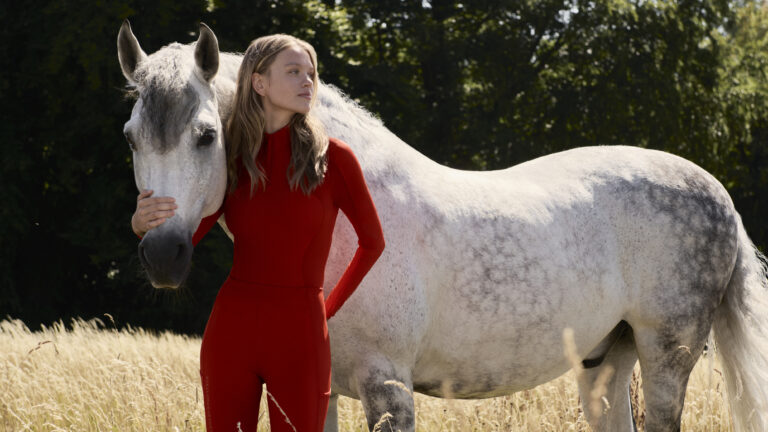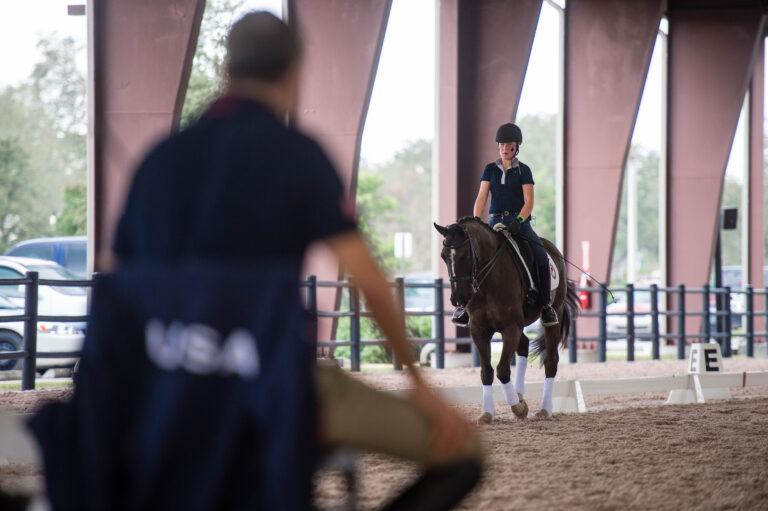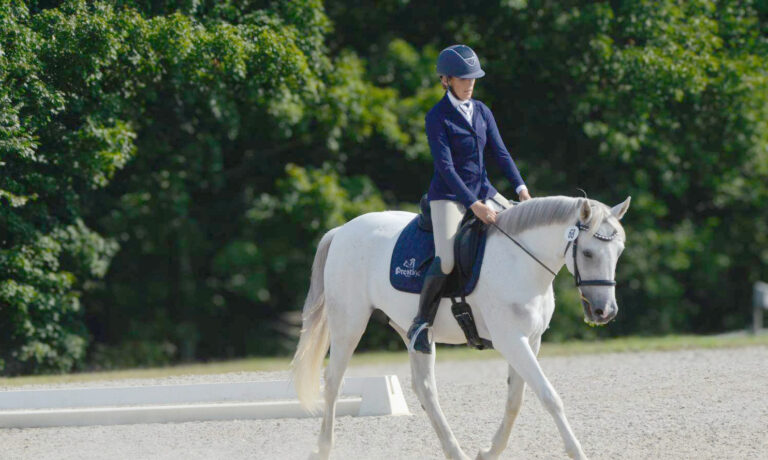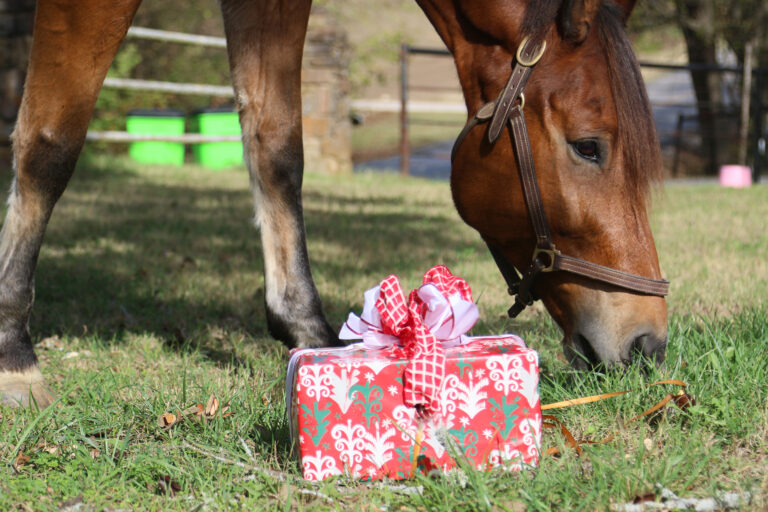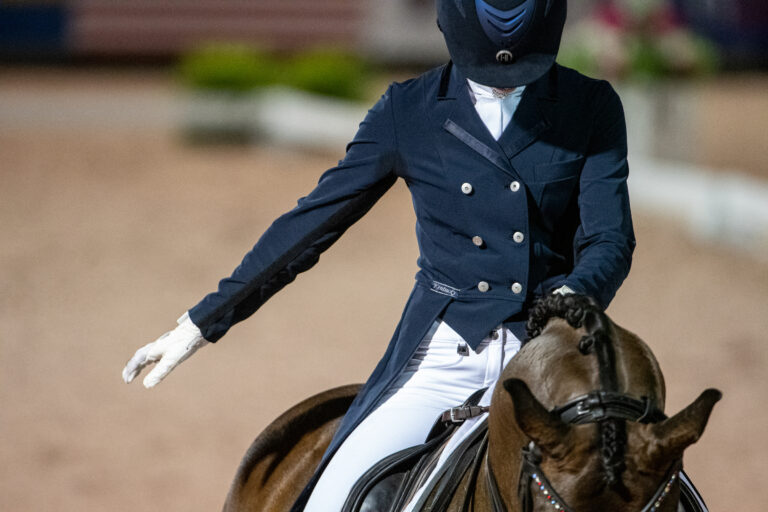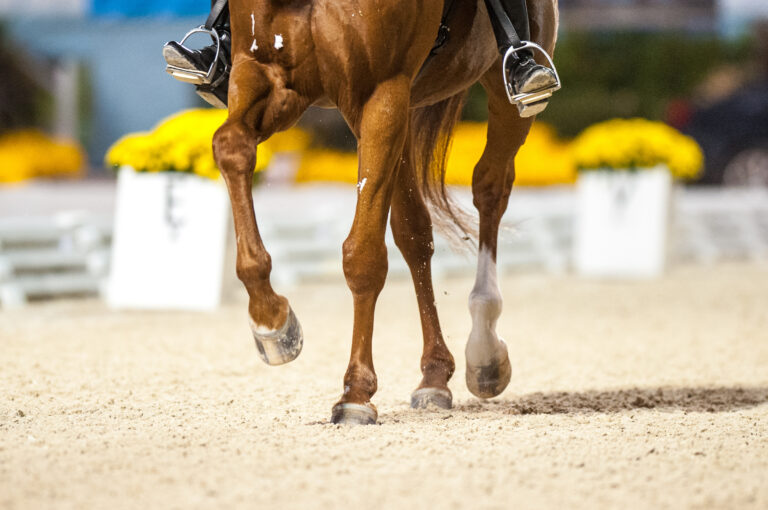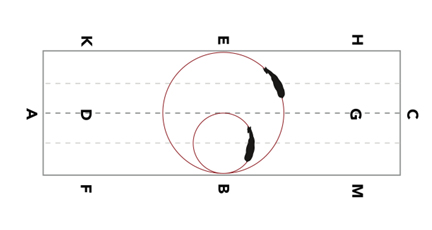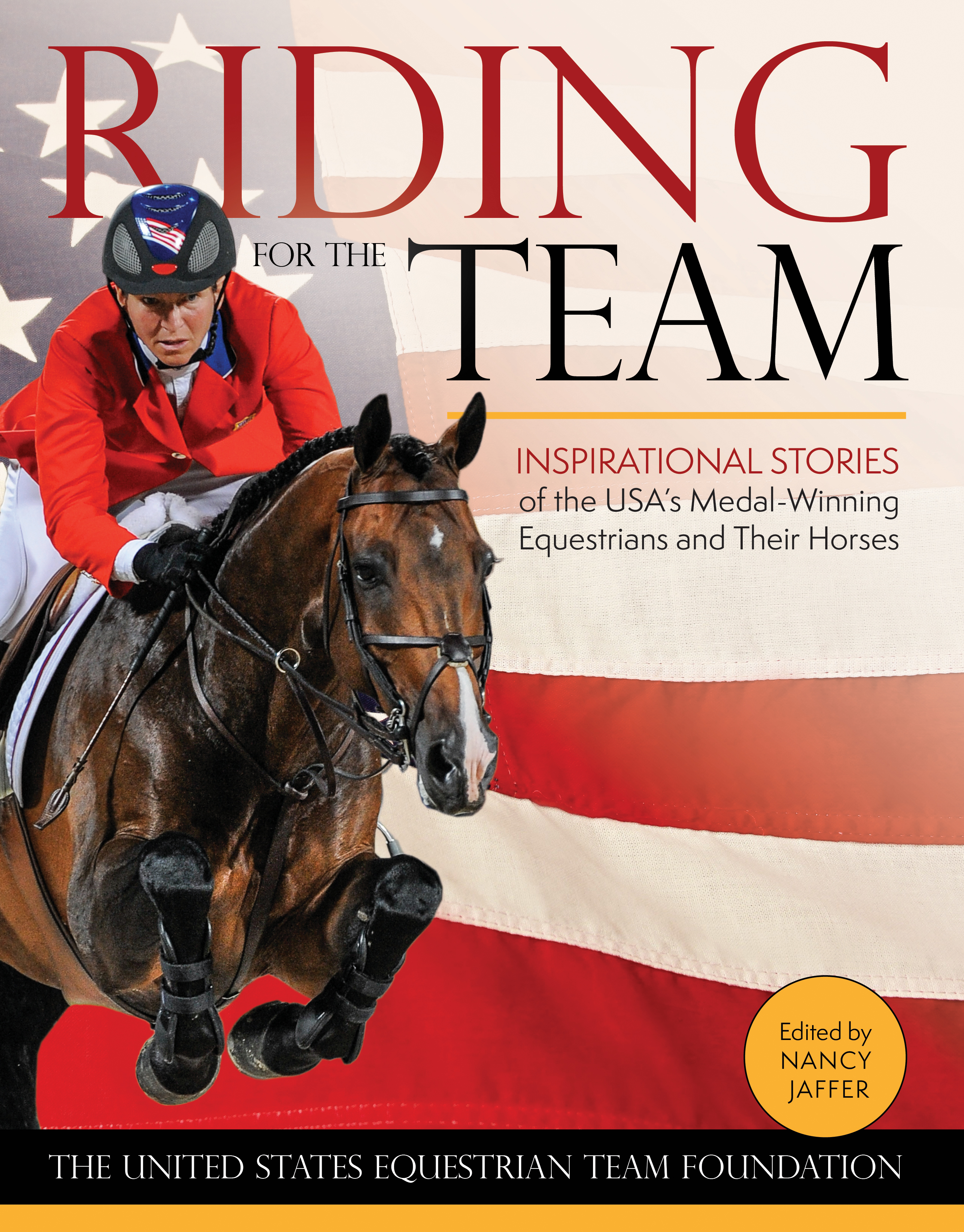
An excerpt from Riding for the Team: Inspirational Stories of the USA’s Medal-Winning Equestrians and Their Horses by United States Equestrian Team Foundation, Edited by Nancy Jaffer. Published by Trafalgar Square Books / HorseandRiderBooks.com. Click here to buy the book.
In her sixth-grade yearbook, Laura Graves wrote that her dream was to represent the United States in the Olympics. While the road from her sixth-grade classroom in Vermont to her Team USA bronze medal at the 2016 Olympic Games in Rio was a long one, Laura and Verdades made that dream a reality.
Laura and her Dutchbred horse, Verdades, known as “Diddy,” gained international attention after a second place finish in the Grand Prix at the 2014 United States Dressage Festival of Champions. Later that year, at the World Equestrian Games in Normandy, the pair was the highest placed US duo, finishing fifth in the Grand Prix Freestyle. Laura and Diddy have gone on to a strong FEI World Cup finals record, with a fourth-place finish in Las Vegas in 2015, and a second place finish in 2017, 2018, and 2019.
Laura and Diddy were fourth individually in the Rio Olympics and second in the Grand Prix Special at the 2018 WEG, after anchoring the silver medal US Team—the best US Dressage Team finish in a global championship since 2002. In 2018, she became the first American dressage rider to be ranked Number One in the world.
Laura lives in Geneva, Florida, with her partner and Diddy’s co-owner, Curt Maes, and is trained by US Dressage Technical Advisor Debbie McDonald.

We bought Verdades in 2002 after watching a videotape of a little bay foal from the Netherlands. The first time that my mom, Freddie, and I saw him in person was outside the quarantine center in Newburgh, New York.
My mom and I kept looking at each other as each bay horse came out of quarantine and headed for a trailer saying, “This must be him.” So then, when it wasn’t, we’d look at the next one and say, “No, this one must be him.”
Finally, we saw a group of men come out with a little, rough-looking foal. This colt required more people than needed to deal with any of the bigger horses, but he went right onto the trailer, and we got him home to Vermont. He was so green that he hadn’t even worn a halter until he was imported.
Once we got back to Vermont, Diddy got very sick right away, which can happen with foals who have to be quarantined after their long flight. He was not used to being handled and was very strong for his size, which became a problem when the veterinarian said he had to be on injectable antibiotics. This meant one of his first experiences with people involved being kept in a stall and stuck with needles. It was quite a difficult transition for a youngster who had just lived in the field with his mother. He needed injections, but since it took two of us to hold him down, there wasn’t anyone to give him the shots. We didn’t have enough hands on deck since it was just my mom and me, so he had to move to the clinic. We thought it would be necessary to save his life, but he was probably traumatized. He was so sick that they had to drill holes in his guttural pouches to drain the infection.
Once Diddy recovered, we started him in our program. We focused on horse care—spending a lot of time working with all our horses on the ground. They got a thorough grooming every day with currycombs and elbow grease.
Diddy was petrified of basic things, such as fly spray and Velcro, and you couldn’t get near him with clippers. If he had come to me as a three-year-old, I would say, “Poor thing, someone treated him badly when he was young.” However, at six months, he hadn’t even been handled. We found that if you lose his trust, he’s not quick to forget. We were in way over our heads.
Of course, we asked for help. Everyone knows a good cowboy or two, and we found one who started working with him, long-lining, and even training with tarps. Diddy began making some good progress…until they started umbrella work.
Our cowboy called and said, “You need to come and get your horse. I started umbrella work and haven’t been able to catch him in the field since.”
Diddy had decided he was not going to let that guy near him ever again! Even today, you cannot push him to accept opening an umbrella near him.
I broke Diddy to ride myself, with professionals on the ground helping. Sitting on his back wasn’t an issue, but putting the saddle pad and saddle on him caused a ton of stress. We didn’t have an arena, so I’d ride him up and down the road until he got scared and wanted to go home. I was a teenager at the time, and started to wonder, “What fun is this?”
I had a trainer and started bringing him to her place, but I was anxious about taking him anywhere because he was so unpredictable. Was he going to freak out or hurt himself? We then made the tough decision to leave him with this trainer and get him sold.
I was raised to believe that when you have a pet, they’re your responsibility for life. There are few animals that came into our home who have not lived their entire lives with us. The idea of selling this horse wasn’t in order to make a profit. It was more because he was young and didn’t need to sit in a field. I knew we would be picky about who he’d go to.
After we dropped him off at my trainer’s place, she called less than a week later; she couldn’t believe I’d been walking and trotting Diddy under saddle. He wouldn’t even let her on him. She told us that if people couldn’t ride him, he couldn’t be sold.
Little by little, she was able to sit on him. I kept riding him, too, and he bucked me off a few times. I dislocated my jaw in one fall. Then, while we were trying to break him to the spur, I was foolish and popped him one. He launched me, and that’s when I broke two vertebrae. While I knew I had to go to the hospital as soon as I got up off the ground, I also knew someone had to get back on him.
I hung around the barn until my trainer got on, and then my mom drove me to the emergency room. I was supposed to be in bed for six weeks, but I didn’t last that long. As soon as the pain felt manageable, I got back on my horse.
Even after Diddy turned five, he was still difficult about the saddle pad and saddles, not to mention snow falling off the roof of the indoor arena. On the other hand, when we were riding, roundness, steering, and moving off the leg were not even second thoughts for him. If I thought it, he did it. This horse seemed to have two completely different minds. Our riding was always the thing that made sense to him. He wanted someone to be close to him. When you sat on his back, it is like he felt you were hugging him.
When I rode with Madeline Austin, Liz Austin’s mom, who breeds Dutch horses in Vermont, she said, “You know, this is an international quality horse.”
I had no idea and was totally surprised. It took four hours to get Diddy on the trailer to go back home. I thought, “There’s no way this one is the one. I should still sell him.”
I left Vermont and went to cosmetology school. I enjoyed it, but it was my backup plan, and I reached the point where I thought, “If I’m going to do this, now’s the time.”
I searched online for “horse trainers, Florida.” Any names I recognized, I applied for a working student position. I didn’t hear back from many of them, but Anne Gribbons, a five-star judge, responded, and I went to her place near Orlando for an interview.
I was ill-equipped, with just a video of me riding Diddy at home. I didn’t think she was impressed, but she said, “You certainly couldn’t afford this horse now.” Anne offered me an unpaid working student spot—even after she sat me on a bunch of Grand Prix horses, and I couldn’t get them to trot.
I showed up at her farm with Diddy in early 2009. It was a huge turning point for me. We stayed for three years, and I learned many things—about training horses, hard work, and running a barn.
When it came to showing, I had horrible nerves, to the point where I would get physically sick before competing. Growing up, I had so many bad show experiences, from getting dragged around the horse show by our two ponies, to a Quarter Horse who would buck and carry on as soon as we entered the show ring. So showing had never been a super fun experience for me…until I took Diddy to a show at Jim Brandon Equestrian Center in Wellington, Florida. We went in there to compete at Third Level, and I’m thinking, “I’m going to have my hands full.” But it was as if he had been doing it all his life.
He seemed to realize, “Hey, this is cool, all these people, all these carrots.” After that show, I no longer had nerves; there was something about how much he enjoyed it that helped me learn to enjoy it.
If we didn’t end up in this sport and we didn’t end up training at such a high level, I think daily life would have been a big struggle for Diddy. He has always lacked confidence, and he can be so fearful. None of the naughty stuff he did came from a place where he had a temper. It was concern and fear. Having a job he could feel proud of and confident about changed his whole life.
In 2010, Anne Gribbons became the Technical Advisor for the US team and didn’t spend much time in Florida. My parents said they would help me for one year, but after that, I would have to figure it out—and I didn’t have any money.
I decided to go home to Vermont and keep Diddy in the barn at my parents’ place. I taught a little and was working promotions for a liquor company. Then, that summer, Anne was conducting a talent search at US Equestrian Team Foundation headquarters in Gladstone, New Jersey, with developing dressage coach Debbie McDonald. She suggested I come and Debbie selected me to ride in the elite clinic that weekend.
By that fall, I was back in Florida, starting work at the barn every day at 6:30 a.m, but I also needed a paying job, so I went on Craigslist and applied for everything. The best fit was restaurant work, which I could do after I left the barn at four each afternoon. I started as a waitress and within the first year, I was asked to bartend. That’s how I was able to earn the money so I could move off the farm into my own apartment.
In the fall of 2011, Diddy broke his jaw in a stable accident, and it mangled his face. To this day, he’s either asleep or getting into trouble. Thank goodness there was a veterinarian at the barn doing dental work on some other horses who was able to sedate him and give him antibiotics right away. I sat with him all night and took him to surgery the next day. It was horrifying. The thought of Diddy not being rideable again didn’t occur to me; I only cared that he would recover and be comfortable.
After the operation, it was like he had braces. They wrapped pins with wires around the molars and across the front teeth, covering them with acrylic, so the wires didn’t cut through his gums. I’m sure it was similar to what happened when I got my own braces—an incredible amount of pressure and pain. It was at least three weeks before he was able to pull grass out of the ground.
Going through all this had left him exhausted from fear. I could see he was broken-hearted and that broke my own heart. He’s so unusually reasonable in human terms. If you pause and tell him in English what’s going on, it’s like he understands you. Unfortunately, sometimes a veterinarian’s nature is to be physical with horses; he doesn’t respond to that at all.
I wondered whether we could ever put a bit in his mouth again. Diddy and I have been through a lot together, and he knows I would never get him into trouble. Throughout all of this, he never said no to me. He trusts that I will ask him only to do things that are best for him.
I slept outside his stall for probably five days because I was worried he was going to stop breathing. His comfort was always a priority. As he was recovering, he was starting to get a little rambunctious, and I said, “He needs a job.”
I put his regular bit on and took the noseband off, and we just hacked on the buckle everywhere. He started to rehab by thinking he had a little bit of a job to do. By January 2012, he was training again. He was still sensitive about it, but he had always been so nice in the hand that it wasn’t really an issue. We have been lucky because he likes to do his job. He was schooling Small Tour and just getting fit again.
After Anne and I went our separate ways, my partner, Curt Maes, and I had a little six-stall barn in the Orlando area, and I needed a trainer. Because of the training session at Gladstone, I thought of Debbie.
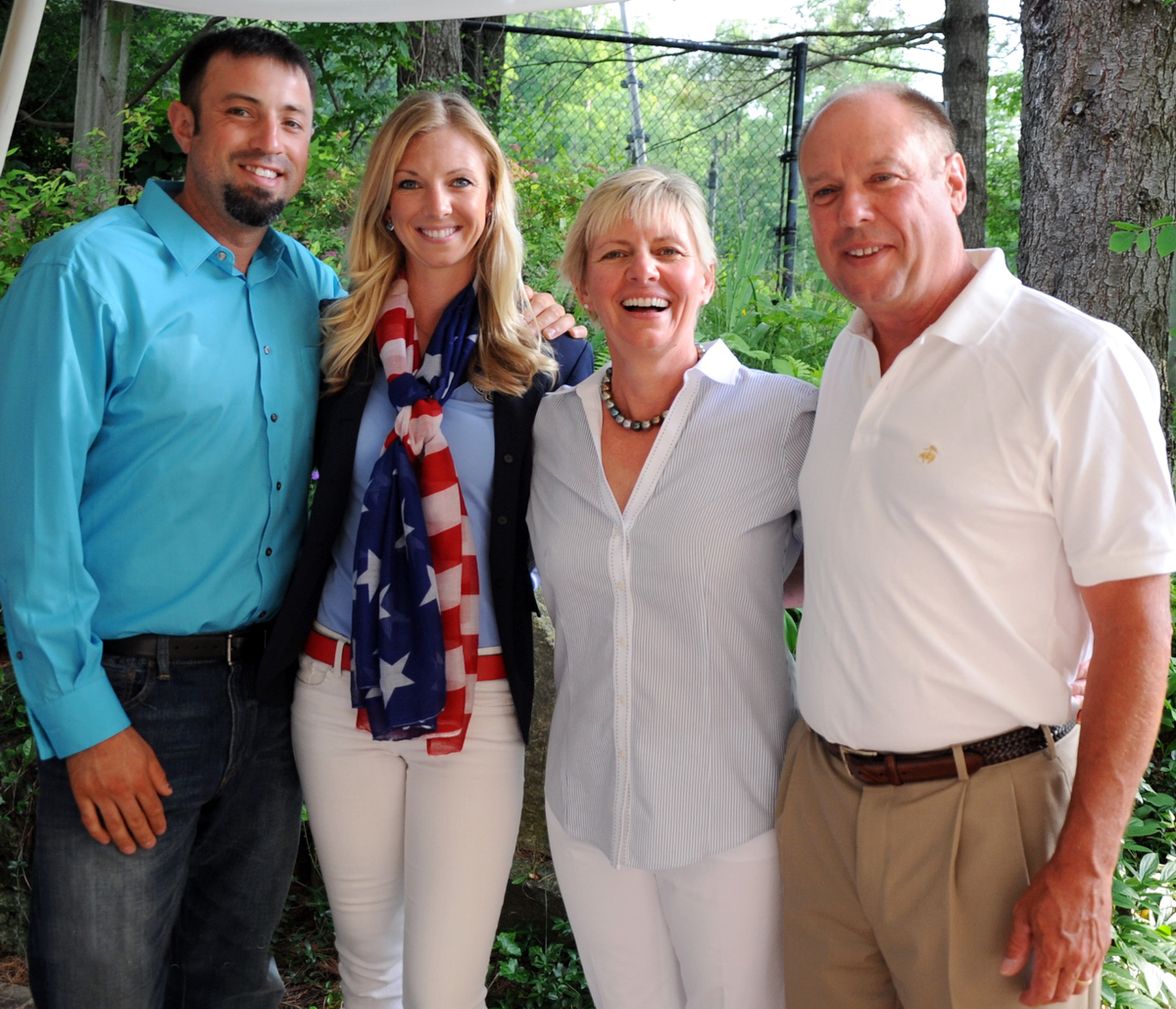
Once I started training with Debbie, it was as if I had been missing one of my arms and riding with Debbie was my other arm. It was so natural. We ended up making some significant changes in Diddy’s bitting, which changed his comfort level and way of going immensely.

I signed up to have my Grand Prix officially observed by Debbie, the developing dressage coach, and Robert Dover, who was the US Dressage Technical Advisor, while they were looking for horses for the 2014 FEI World Equestrian Games. I rode on a Sunday afternoon at the Adequan Global Dressage Festival, and there was not a soul around during our ride.
After we had finished, I figured I hadn’t been observed and walked back to the barn almost in tears. I was so frustrated and certain that I was just never going to crack into the top tier of the sport. During that weekend I kept comparing Diddy to other horses I’d seen and wonder, “Why am I not scoring better? He’s nicer than these other horses.”
I was done at that point, and I decided I would do something else, a career that at the end of the day was rewarding.
And then Debbie came running down to the stabling to talk to me.
“Laura, we just watched your ride,” she said. “We’ve been watching Grand Prix horses all weekend. The potential we see in your horse is so much higher than what we’ve seen. You tell me when you want a lesson, and I’ll be there for you.”
All of a sudden, the fact that I was broke and scoring 64 percent didn’t matter. I knew our path wasn’t going to be a straight shot, but I knew this was the right path for me.
I was that kid who couldn’t afford, who couldn’t do, who couldn’t have. That’s where you’re going to find the next top star. What is the best advice you can give someone like that? I’m sure they’re looking for something like “work hard” or “seize opportunities.” The best advice I can give, however, is to learn how to succeed at failing. Learn the way to get back on your feet. If you don’t fail well, you’re not going to make it very far.
There are going to be a lot of people who may not purposely want to hold you down, but not everybody is here to give you a leg up. You have to make it happen for yourself.
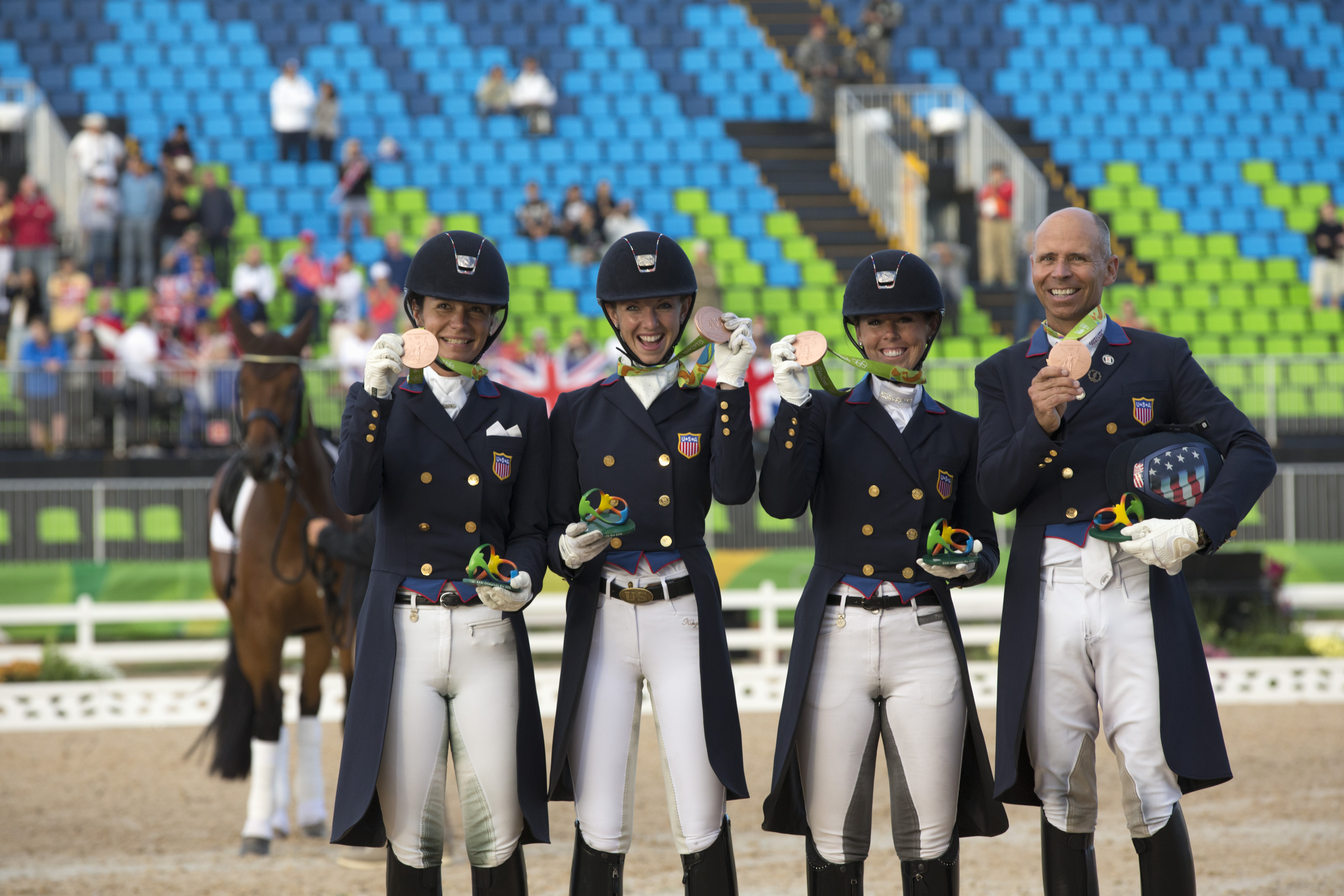
Liked this excerpt? Click here to buy the book.



